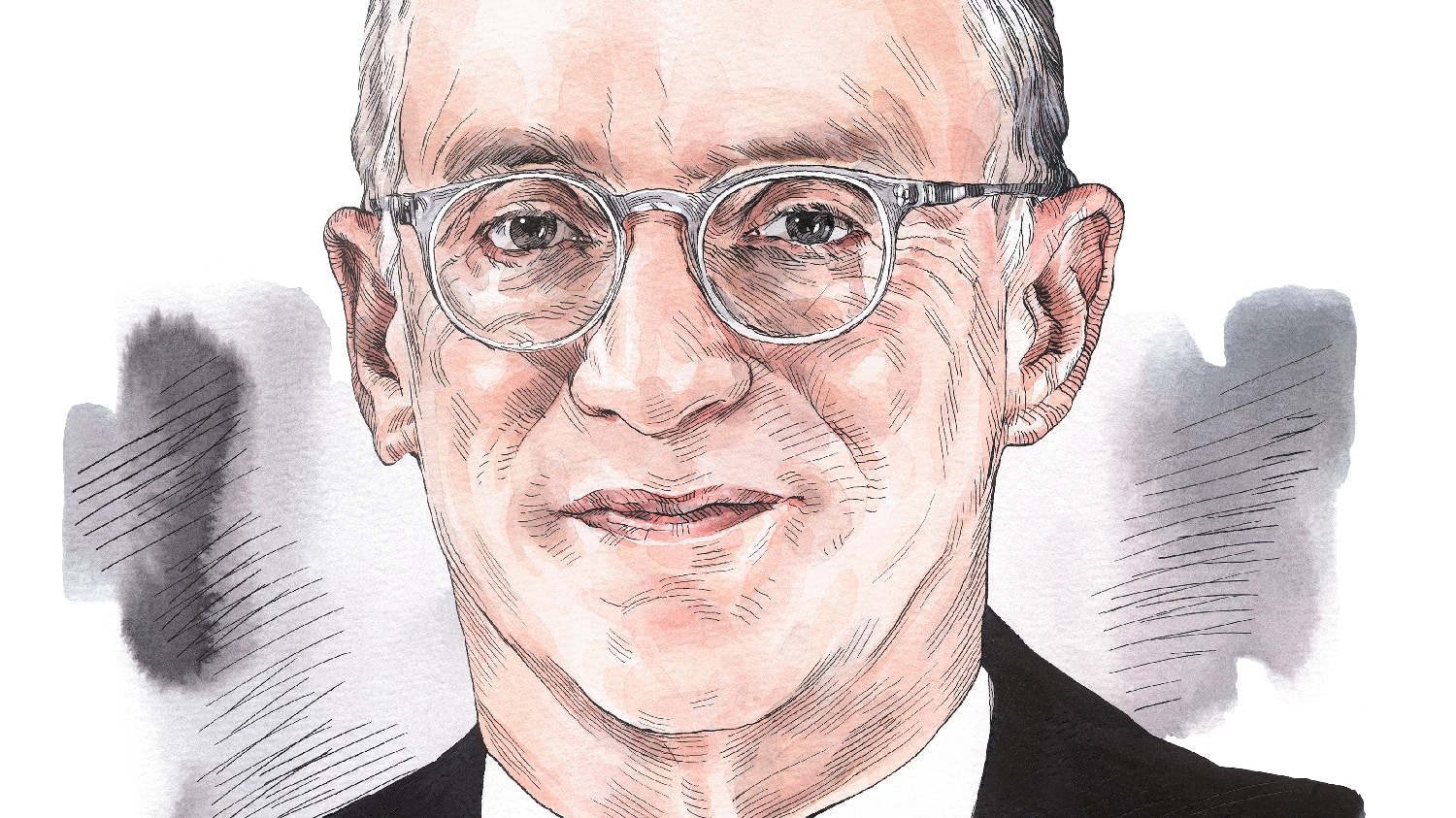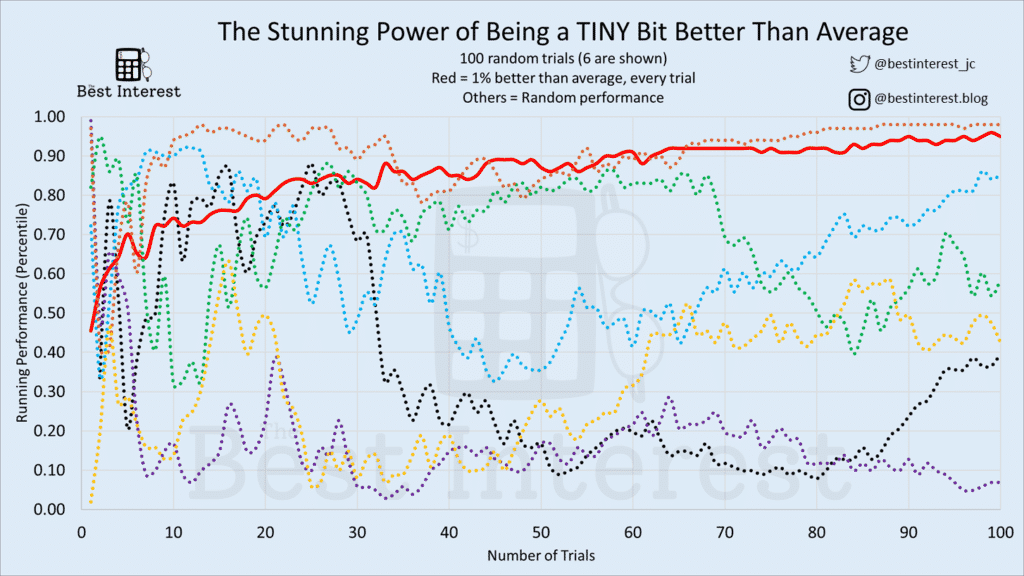The investing performance goal of Oak Tree Capital is amazingly simple. Co-founder Howard Marks states:
I feel strongly that attempting to achieve a superior long term record by stringing together a run of top-decile years is unlikely to succeed. Rather, striving to do a little better than average every year — and through discipline to have highly superior relative results in bad times — is:
– less likely to produce extreme volatility,
– less likely to produce huge losses which can’t be
recouped and, most importantly,– more likely to work (given the fact that all of us are
Howard Marks, 1990 Oak Tree Letter to Shareholders
only human).

In other words, Oak Tree does not try to be in the 90th or 95th percentile of investment performance. They aren’t trying to “win” every race.
Rather, Oak Tree simply tries to be “a little better than average.” They’re trying to be in the 55th or 60th percentile. And they’re trying to be there every year. This is especially true during the “bad times,” so that Oak Tree can secure “superior relative results” to their competitors.
You might think, “If Oak Tree is only better than 55% of investors year after year, why is it such a legendary firm?”
If someone finishes just better than average in every trial, won’t they finish just better than average overall?
Not quite. There is magical math behind Marks’ idea.

The solid red line shows our “slightly better than average” participant. I had them finish in 51st place (out of 100 participants) for 100 trials in a row. The other dotted lines show (6) of the 99 other participants. The Y-axis measures each of their relative placements (e.g. their percentile ranking) over time.
Slowly but surely, we see our “slightly better than average” player rise to the top. After one trial, they’re just middle of the pack. But after 100 trials, they’re in the 95th percentile!
Maybe you don’t have the skills to conquer your world overnight. That’s ok. Just be better than average. Over, and over, and over, and over. Let time do the hard work for you. All you have to do is keep showing up.
This is reminiscent of James Clear’s “1% better” concept.
- 1% better every day for a year compounds up to a 3778% improvement!
- 1% worse every day for a year compounds down to a 97.5% decline!
A small change, when compounded, can have life-changing results.
This applies to your personal finances, to your health, to your relationships. It makes me think of The Best Interest. I’ve produced (mostly) solid content every week for the past 3.5 years. I’m not “going viral,” but I’m slowly making a name for myself. And that helped me change my career.
Howard Marks finishes his newsletter by writing:
There will always be cases and years in which, when all goes right, those who take on more risk will do better than we do. In the long run, however, I feel strongly that seeking relative performance which is just a little bit above average on a consistent basis — with protection against poor absolute results in tough times — will prove more effective than “swinging for the fences.”
Howard Marks
In the world of baseball/investing analogies, the message here is simple. A bunch of singles is just as good—and more realistic—than hitting only home runs.
Thank you for reading! If you enjoyed this article, join 8000+ subscribers who read my 2-minute weekly email, where I send you links to the smartest financial content I find online every week.
-Jesse
Want to learn more about The Best Interest’s back story? Read here.
Looking for a great personal finance book, podcast, or other recommendation? Check out my favorites.
Was this post worth sharing? Click the buttons below to share!
A bit more on the spreadsheet and graph above…
- 100 “participants”
- 100 trials per participant
- Each person has a random “performance” in each trial**
- Except that our one lucky participant is a little better than average every time. In each trial, they finish 51st – just better than average.
- Every trial was randomized between 0.50 and 1.50
- The “little bit better” participant consistently scored a 1.01. Just better than the 1.00 average.
- Trials were cumulatively multiplied together (similar to how investing returns work) and then ranked.
**Few things in life are truly random. If 100 people tracked their weekly running, we probably wouldn’t see someone finish in the top 10 one trial, then bottom 10 the next. Much of life is repeatable, not random. But many exercises involve the randomness of luck and randomness of human nature.
Here’s more from Howard Marks. This is a fantastic talk.